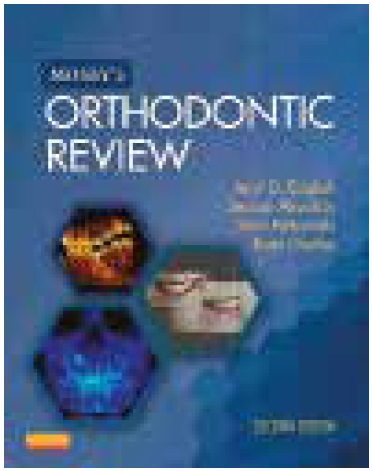Article
Mosby's Orthodontic Review
This is the second edition of a book that has been specifically designed for students undertaking the American Board of Orthodontics (ABO) examinations and has four editors – one Finnish and three American, with 46 other contributors. In their introduction, the editors state that the book should also be useful as a guide for undergraduate students and for general dentists when communicating with the orthodontic specialist.
The layout of the chapters tends to follow a traditional pattern, with craniofacial growth, development of the occlusion and diagnosis and treatment planning, then proceeds to describe the various types of appliances, adult orthodontics, use of temporary anchorage devices, temporomandibular disorders and, finally, looks at new technologies such as laser surgery, cone-beam CT and complex craniofacial surgery. However, the text of the chapters themselves consists of a series of questions and answers, usually quite short. Reference is made to the most recent research in the discipline and the increasing number of systematic reviews and meta-analyses are sought out and prominently highlighted.
Some chapters are intriguing – for example, the one devoted to the Invisalign system, with a co-author being the Director of Research and Technology at Align Systems. A shower of brochures about clear orthodontic alignment systems seems to pour out every time we open the weekend supplements of the national newspapers, so it would be prudent for all dentists to understand precisely the claims being made, and convey the limitations to their patients. The chapter on ‘Biomechanics in Orthodontics’ is comprehensive and explains the concepts of force, moments, centres of resistance and rotation, force couples and so on, while the chapter on ‘Temporomandibular Disorders’ emphasizes that TMD is a collection of signs and varying symptoms, with many factors (other than occlusal problems) contributing both to presentation and to treatment modalities. The use of laser surgery for soft tissue problems such as gingival hyperplasia, frenectomy and tooth exposure is covered in a short chapter and the results shown are impressive, especially where gingival hyperplasia is concerned.
As a textbook, this is not as comprehensive as some others, but as a review it works well. The first edition was in 2009 and this update published five years later is about right. The layout of questions and answers may not appeal to everyone but as a reminder for the busy practitioner it will prove useful. Books of reviews in the medical sciences are common and this volume for orthodontics is timely. It should be updated and reprinted every five or so years in order to make it an essential part of the orthodontist's library.

